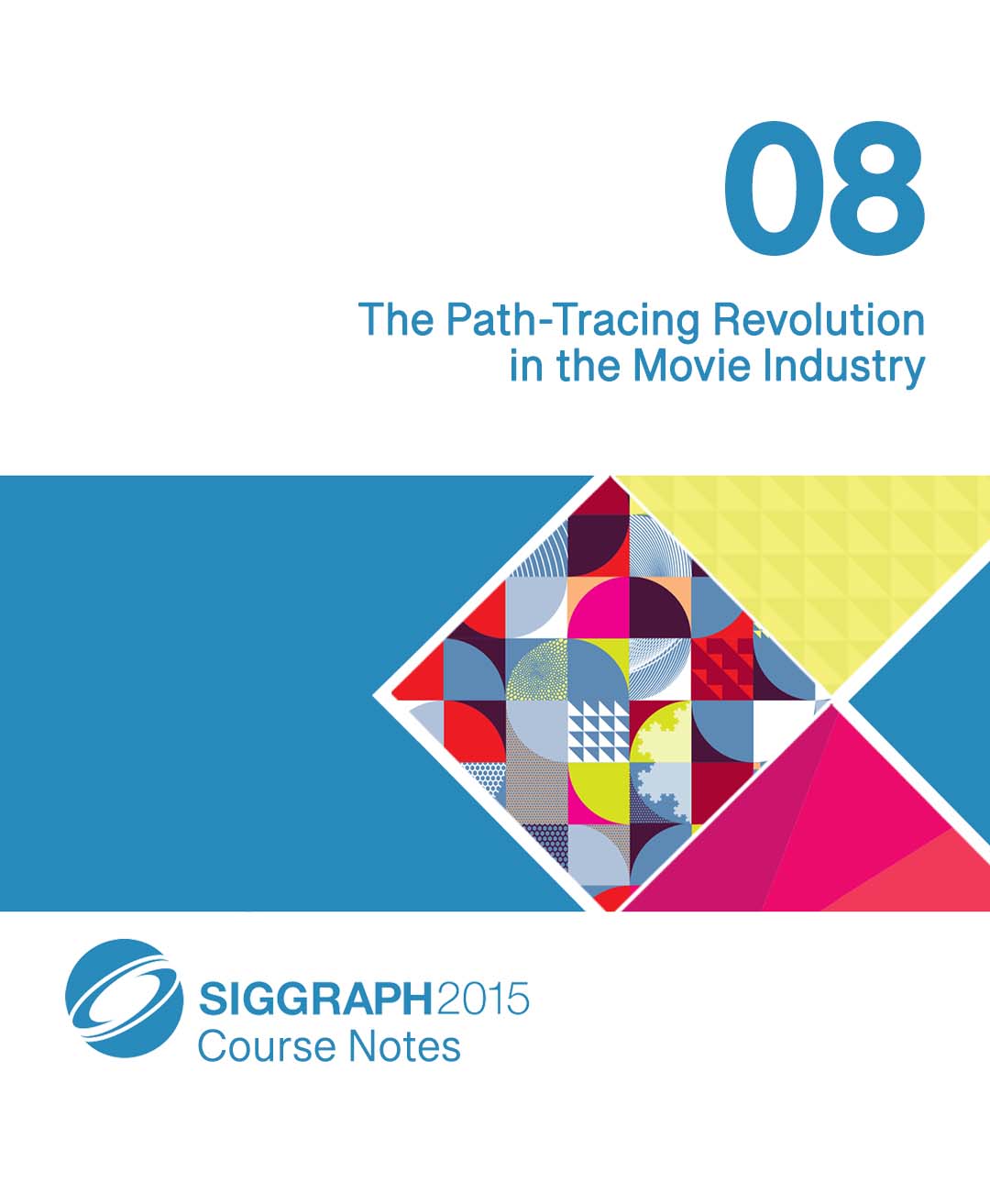“The Path-Tracing Revolution in the Movie Industry” by Keller, Fascione, Fajardo, Georgiev, Christensen, et al. …
Conference:
Type(s):
Entry Number: 08
Title:
- The Path-Tracing Revolution in the Movie Industry
Course Organizer(s):
Presenter(s)/Author(s):
Abstract:
Prerequisites
Some understanding of ray tracing.
Who Should Attend
Technical directors, artists, and their managers and producers, as well as researchers who need a deeper understanding of the state of the art in path-tracing algorithms and their challenges.
Description
The primary objective of this course is to explain how path tracing is revolutionizing the way movies are rendered. Beyond the obvious advantages of simpler and faster realistic lighting, path tracing enables novel workflows. Modeling with physically based entities is much more intuitive and allows for separating rendering algorithms from material descriptions, which generates more portable assets and requires much less tweaking in look development. Artistic freedom is extended because users can select any desired mode of light transport with regular expressions, which are more flexible than classic arbitrary-output variables because they can be specified without extra programming or shader modifications. The result: production workflows are more efficient, reproducible, and modular.
The course reviews the coherent state of the art in path tracing in movie production, its novel workflows, and its software architectures, which can handle gigantic amounts of geometry, textures, and light sources. Examples from recent movies provide evidence of the benefits of using path tracing.




